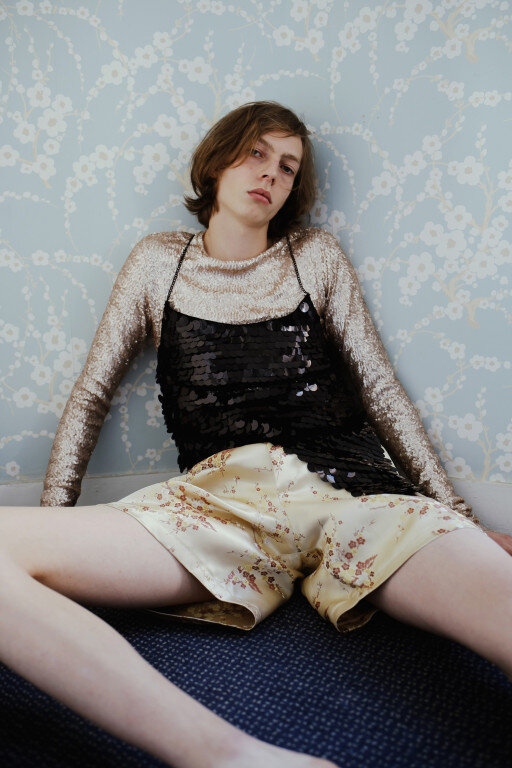




Femininity and masculinity have been seen as two opposing ideas since the beginning of contemporary civilization. Masculinity, in particular, possesses a fragility to those that define it by the standards given to us by our patriarchal society and utter machismo. Truth be told, there are feminine qualities that are inherent within the male sex. Many refuse to come to the conclusion that the expression of female attributes isn’t the antithesis of manliness. Feminine men often being fetishized within this misogynistic thought. Many in the world of fashion have yet to expand of this notion, however, brand Lazoschidmlhas been a constant voice creating and modify how we define the “femme” male.
Since establishing the Swedish-German fashion brand Lazoschidmlin 2014, designers Josef Lazo and Andreas Schmidl have created a brand that explores the notions of masculinity in menswear. As a notion, the idea of what is defined as menswear in the wave of fluidity that has permeated the runways is a direction that many established designer have yet to tread. However, the youthful duo manages to surprise season after season with strong connections with queer culture in innovative ways that challenge the canons of menswear design.
Lazoschimdl’s latest collection entitled “Playdate” skates across their main points of sex and gender. The slim male bodies as well as more boyish figured woman walked the runway in an array of cropped knits, snuggly fitted lurex, metal chain fetish pieces, sequins, velveteen, and see-through moments. Every garment styled with the potential for bare skin to be a prominent part of the overall look. Creating a collection that, in tandem with the use of the codpiece seen throughout the presentation, illicit the ideas of sensuality reflected traditional womenswear while being referential to the male form.
Bedazzled words graced the bodice’s of many of the pieces with phrases like “toy” or “wet dream” reflected the “Playdate” aesthetic the designers created. The use of these words and ideas, especially in the context of the male gender, are associated with the idea of generally queer feminine males. In our culture, this group of men is often fetishized and overtly sexualized. Lazoschimdl showcasing this fact with the tightly fitted silhouettes, chain pieces, and states of undress in which the models walk the runway.
It is interesting to see the ideas of masculinity within the context of the queer and fluid universe where Lazoschimdl resides. Playing with the idea of the archetypical “femme” is male queer culture as it translates to fashion is in its essence a recognition of a group which is most responsible for challenging traditional menswear and the narrative the brand continues to expand.
The mission to change the perception of menswear from the point of view of femininity regardless of gender is something that is valuable when it comes to representation of gender-fluidity in fashion. Establishing what gender expression can be for those that are drawn to non-traditionally gendered aspects of fashion is an important responsibility. With designs showcasing gender as a balance and not a battle, as well as being about to communicate their point of view within the male queer culture, Lazoschimdl may be shifting our views of what can exist in menswear, with written recognition and tribute in bedazzled letters.
